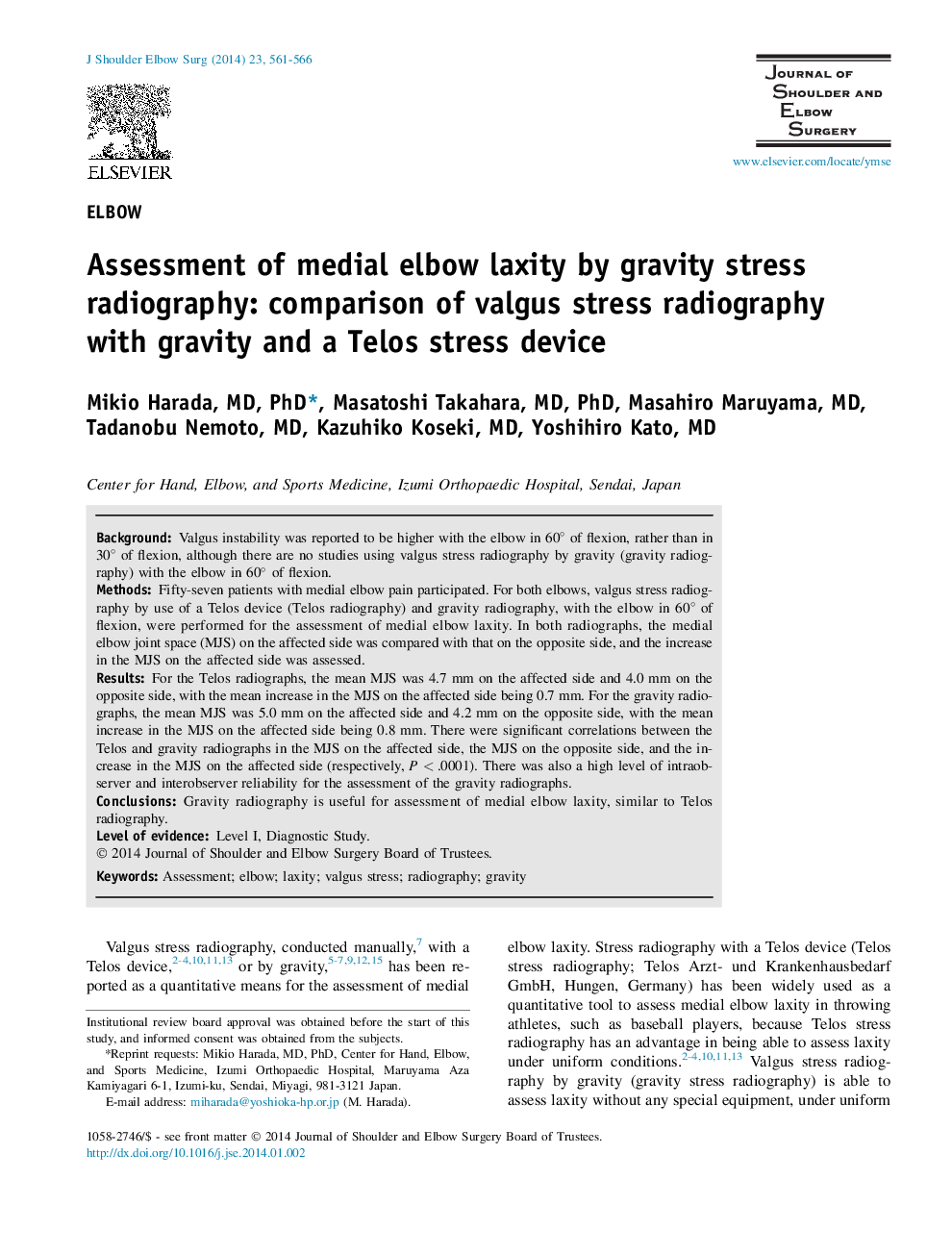| Article ID | Journal | Published Year | Pages | File Type |
|---|---|---|---|---|
| 6211071 | Journal of Shoulder and Elbow Surgery | 2014 | 6 Pages |
BackgroundValgus instability was reported to be higher with the elbow in 60° of flexion, rather than in 30° of flexion, although there are no studies using valgus stress radiography by gravity (gravity radiography) with the elbow in 60° of flexion.MethodsFifty-seven patients with medial elbow pain participated. For both elbows, valgus stress radiography by use of a Telos device (Telos radiography) and gravity radiography, with the elbow in 60° of flexion, were performed for the assessment of medial elbow laxity. In both radiographs, the medial elbow joint space (MJS) on the affected side was compared with that on the opposite side, and the increase in the MJS on the affected side was assessed.ResultsFor the Telos radiographs, the mean MJS was 4.7 mm on the affected side and 4.0 mm on the opposite side, with the mean increase in the MJS on the affected side being 0.7 mm. For the gravity radiographs, the mean MJS was 5.0 mm on the affected side and 4.2 mm on the opposite side, with the mean increase in the MJS on the affected side being 0.8 mm. There were significant correlations between the Telos and gravity radiographs in the MJS on the affected side, the MJS on the opposite side, and the increase in the MJS on the affected side (respectively, P < .0001). There was also a high level of intraobserver and interobserver reliability for the assessment of the gravity radiographs.ConclusionsGravity radiography is useful for assessment of medial elbow laxity, similar to Telos radiography.
